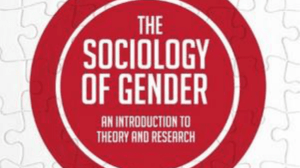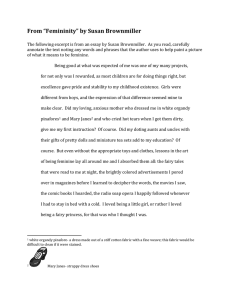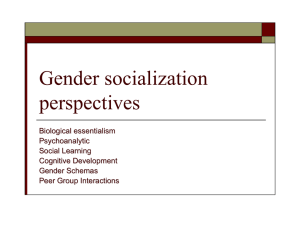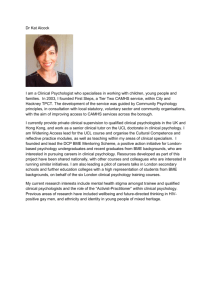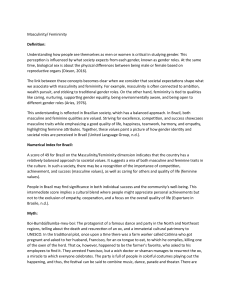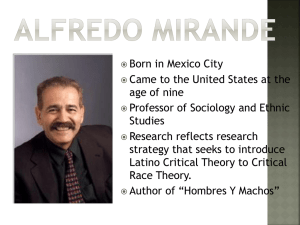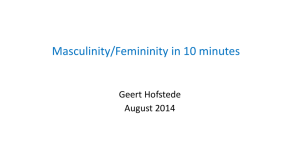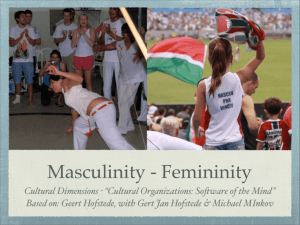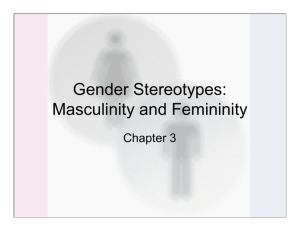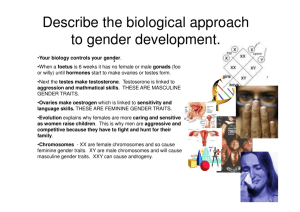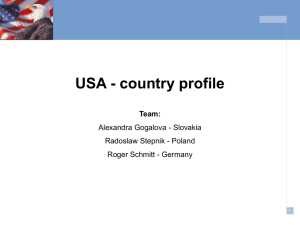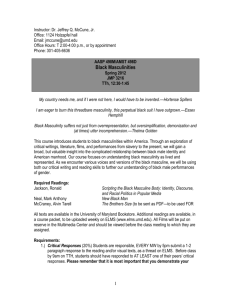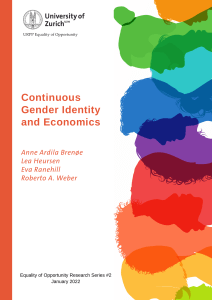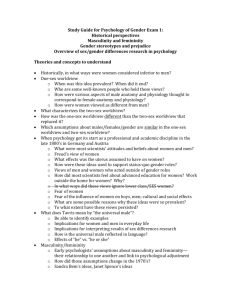Psych of Gender (UNYP)
advertisement
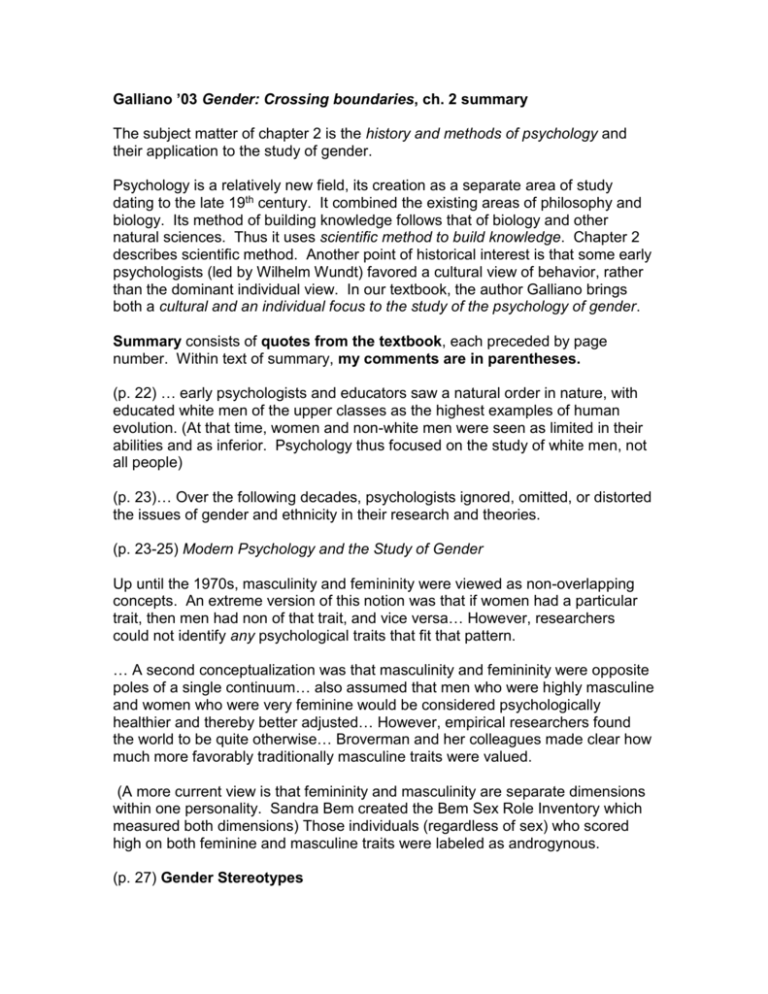
Galliano ’03 Gender: Crossing boundaries, ch. 2 summary The subject matter of chapter 2 is the history and methods of psychology and their application to the study of gender. Psychology is a relatively new field, its creation as a separate area of study dating to the late 19th century. It combined the existing areas of philosophy and biology. Its method of building knowledge follows that of biology and other natural sciences. Thus it uses scientific method to build knowledge. Chapter 2 describes scientific method. Another point of historical interest is that some early psychologists (led by Wilhelm Wundt) favored a cultural view of behavior, rather than the dominant individual view. In our textbook, the author Galliano brings both a cultural and an individual focus to the study of the psychology of gender. Summary consists of quotes from the textbook, each preceded by page number. Within text of summary, my comments are in parentheses. (p. 22) … early psychologists and educators saw a natural order in nature, with educated white men of the upper classes as the highest examples of human evolution. (At that time, women and non-white men were seen as limited in their abilities and as inferior. Psychology thus focused on the study of white men, not all people) (p. 23)… Over the following decades, psychologists ignored, omitted, or distorted the issues of gender and ethnicity in their research and theories. (p. 23-25) Modern Psychology and the Study of Gender Up until the 1970s, masculinity and femininity were viewed as non-overlapping concepts. An extreme version of this notion was that if women had a particular trait, then men had non of that trait, and vice versa… However, researchers could not identify any psychological traits that fit that pattern. … A second conceptualization was that masculinity and femininity were opposite poles of a single continuum… also assumed that men who were highly masculine and women who were very feminine would be considered psychologically healthier and thereby better adjusted… However, empirical researchers found the world to be quite otherwise… Broverman and her colleagues made clear how much more favorably traditionally masculine traits were valued. (A more current view is that femininity and masculinity are separate dimensions within one personality. Sandra Bem created the Bem Sex Role Inventory which measured both dimensions) Those individuals (regardless of sex) who scored high on both feminine and masculine traits were labeled as androgynous. (p. 27) Gender Stereotypes (To understand people, we organize them into “socially meaningful categories,” including gender. Galliano’s definition of stereotype: Culturally based belief that all members of particular human groups have the same characteristics.) … Gender stereotypes distort both people and reality itself (since it may lead you to an incorrect conclusion about what you think you see). (Research methods used to study gender) Refer to chapter 2 for description of these methods: Case Studies Observation Surveys Developmental Approaches Correlational Studies Experimentation Meta-Analysis Qualitative Methods
